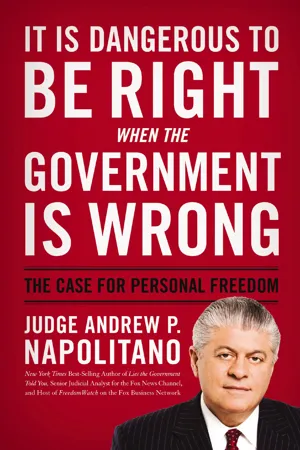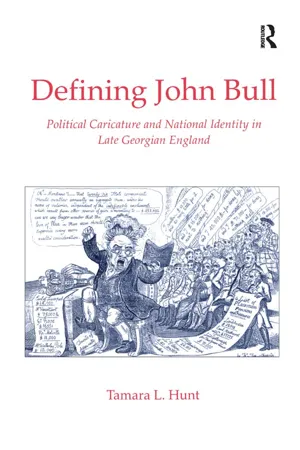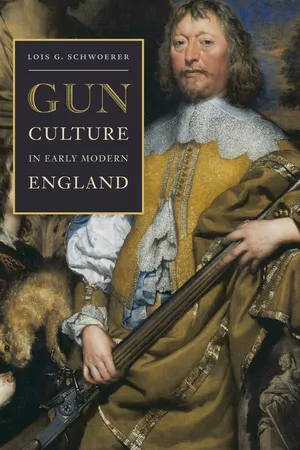History
Petition of Right
The Petition of Right was a document presented to King Charles I of England in 1628, outlining specific grievances and seeking redress for violations of traditional English liberties. It sought to limit the king's power by prohibiting arbitrary taxation and imprisonment without cause, and reaffirming the importance of due process. The Petition of Right is considered a landmark in the development of constitutional law in England.
Written by Perlego with AI-assistance
Related key terms
5 Key excerpts on "Petition of Right"
- eBook - ePub
Staging Authority in Caroline England
Prerogative, Law and Order in Drama, 1625–1642
- Jessica Dyson(Author)
- 2016(Publication Date)
- Routledge(Publisher)
2Issues of Right; Problems of Law
Petitioning was a common way to approach the monarch or Privy Council for assistance. There were two main forms of petition: the Petition of Right, and the petition of grace. Private petitions of right asked the king to provide justice to an injured party, seeking redress for specific, identified and investigated grievances; those of grace sought mercy or exemption for a subject from an aspect of law. What was unusual about the Petition of Right in 1628 was that it was presented collectively by both Houses of Parliament on behalf of the country to gain redress for grievances caused by the King’s manipulation of law regarding taxation and imprisonment. Members of Parliament sought a royal explanation of those laws by which he claimed to act, or the institution of further laws to confirm the liberties of his subjects. Although Charles was prepared to confirm existing laws, including Magna Charta (which was usually appealed to in cases of dispute between the sovereign and subject over rights and liberties), he was not prepared to create new laws, or to provide a legally binding, explicit elaboration of the meaning of such existing laws, which could potentially limit his scope for interpretation or prerogative action. A further ratification of Magna Charta did not go far enough for many of those sitting in Parliament; it had been confirmed several times in the past by a number of monarchs, and had not provided sufficient guarantee of the subjects’ liberties, depending as it did on the king’s interpretations and enactment of its provisions. After some debate, the House of Commons decided to present the Petition of Right. In using this form of petition, they were not merely presenting a complaint over unsubstantiated grievances; rather, a Petition of Right was a statement that wrong had been done, and that the monarch had to take action to rectify the issues stated. Although the King had refused to clarify the law, the Petition also provided a bridge between complaint and legislation: gaining royal assent to a Petition of Right was an archaic method of passing law. Nevertheless, the extent to which the Petition could be seen as a statute was and is heavily debated.3 - Andrew P. Napolitano(Author)
- 2011(Publication Date)
- Thomas Nelson(Publisher)
The right to petition was also essential to the development of popular sovereignty. This theory holds that, in the words of Benjamin Franklin, “the rulers are the servants and the people their superiors and sovereigns.” The right to petition furthers popular sovereignty by making the government accountable to the people for all of its wrongs and misguided policies; petitions are not mere prayers or requests, but demands made by the masters (the people) to their servants (the government). If, however, the people were the servants of the government, then the government’s interests would always be superior to those of the people, and it would be oxymoronic to demand that the government redress its violations of the people’s natural rights. President John Quincy Adams succinctly stated the role that the right to petition plays in our political system: “The right of petition . . . is essential to the very existence of government; it is the right of the people over the Government; it is their right, and they may not be deprived of it.” Thus if we lose the ability to petition the government, we also lose our right to demand that the government protect our freedoms instead of merely enhancing its own power.One of the most essential features of the right was that the people remain immune from punishment for petitions made to the government. The most important event in securing this component of the right was the famous Seven Bishops Case. During the seventeenth century, the English Parliament seriously curtailed the rights of Catholics to participate in government. As a response, in 1687 the Catholic monarch King James II issued his Declaration of Indulgence which negated those restrictions, and later demanded that the Declaration be read aloud during Protestant church services. The predominantly Protestant English citizenry nonetheless perceived this action as an encroachment upon the sovereignty of Parliament and an initial attempt to re-establish Catholicism as the state religion. Believing the command to be an illegal exercise of authority, a number of senior Anglican bishops, including the Archbishop of Canterbury, petitioned the King, requesting that they be exempt from the duty to read the Declaration. This nationally published request outraged King James, who responded by charging them with the crime of seditious libel, “written or spoken words . . . that tend to . . . embarrass, challenge, or question the government.”3- eBook - ePub
The United Nations Trusteeship System
Legacies, Continuities, and Change
- Jan Lüdert, Maria Ketzmerick, Julius Heise, Jan Lüdert, Maria Ketzmerick, Julius Heise(Authors)
- 2022(Publication Date)
- Routledge(Publisher)
On the other hand, whether a complaint was considered a petition, however, depended not only on the intention of the author but also on the receiving authority, which examined and classified them according to its own rules. Moreover, the fact that petitioners addressed themselves to their colonial rulers, the PMC, or the Trusteeship Council, indicates that petitioners accepted and submitted to their authority. In short: Petitioning also represented colonial power.Right to Petition: Brief Historical Overview and State of the Art
Since the Middle Ages, English law provided the right to petition to the Crown,11 which “extended automatically to all British subjects in British dependencies and colonies.”12 Although not yet legalized internationally, petitioning was a widespread practice in almost all colonial empires.13 After WWI, the League of Nations had not yet legally introduced a right to petition, yet it recognized the practice by introducing an examination procedure for written petitions.14 Its aim, however, was to remove unwanted petitions from circulation.15After WWII, the anti-colonial states failed to include the right of petition in the Universal Declaration of Human Rights due to the resistance of the colonial powers and adopted no more than a secondary resolution stating that “The right of petition is an essential human right.”16 Yet, the UN Charter established the right to petition for individuals of UN trust territories – a right that hardly any other dependent people had dreamed of having recourse to. But soon the right of petition was to become a “victim of its own success.”17 Colonial states saw petitions as a threat to their prestige and instrumentalized rules of procedure to erode the petition system of the Trusteeship Council and the Human Rights Commission,18 thereby creating “the most elaborate wastepaper basket ever invented.”19 Especially petitioners from African trust territories were dissatisfied with the passivity toward their petitions and increasingly requested to be heard directly by the General Assembly.20 - eBook - ePub
Defining John Bull
Political Caricature and National Identity in Late Georgian England
- Tamara L. Hunt(Author)
- 2017(Publication Date)
- Routledge(Publisher)
5 The Rights of Englishmen The concept of the ‘rights of Englishmen’ was almost as amorphous as the figure of John Bull, which became more apparent as calls for political reform mounted in late Georgian England. Central to this debate were questions about the rights of citizens to complain about government oppression and to demand redress. Since the notion of a ‘loyal opposition’ within government was itself very recent, there was virtually no formal structure for extra-Parliamentary debate on – and opposition to – unpopular government measures. For example, the Bill of Rights plainly stated that ‘it is the right of subjects to petition the King,’ but this right was not as straightforward as it appeared. Did this also authorize petitions to Parliament, and, if so, could groups organize to draw up petitions promoting particular political reforms? Some argued that such political activism was illegal, since the Bill of Rights also declared that Parliamentary debates or proceedings ‘ought not to be impeached or questioned in any court or place out of parliament,’ and meetings held to complain about Parliamentary policies certainly seemed to fall under the heading of questioning the legislature’s actions ‘out of parliament.’ 1 Even if Parliament and the government ultimately agreed that the public had some right to discuss official policy, they were under no obligation to act on petitions or to treat as legitimate the activities of various political groups organized to obtain political reform. 2 The public faced a similar quandary; as political debate became more polarized, the complaints and activism of individuals and groups had to be evaluated to determine if they were legitimate, e.g., within the existing structure of the English constitution - eBook - ePub
- Lois G. Schwoerer(Author)
- 2016(Publication Date)
- University of Virginia Press(Publisher)
6When King Charles II died in 1685 without leaving a legitimate heir, his Roman Catholic brother, James, Duke of York, ascended the throne as King James II. Few objections were raised, remarkably enough in view of the fervent but unsuccessful attempt just five years earlier to exclude him from the succession to the Crown because of his Catholicism. Then, the most significant protest came from James, Duke of Monmouth, the illegitimate son of King Charles II. Handsome, Protestant, and popular in western England, Monmouth led a rebellion that swept through western England in June 1685.7 James II defeated the uprising with an army of which 10 percent of the commissioned officers were Catholic, a blatant violation of the Test Act of 1673.8 That law required all political and military officers to take an oath denying transubstantiation, thereby protecting Protestants by assuring that no genuine Catholic could hold political or military office. In disregarding the law, James misused the royal dispensing power, his critics charged. A member of the 1685 Parliament declared that for army officers “to be employed not taking the Tests, is dispensing with all the Laws at once.”9 He implied that James had assumed the power to “dispense” with or cancel any law that he pleased. Fueling the increasing fear that James intended to disarm and replace Protestants with Catholics, in 1686 the king encamped his army on Hounslow Heath just outside of London. The army could be seen there, menacing the capital. At the same time, similar events in Ireland prefigured what English subjects might expect: Richard Talbot, Earl of Tyrconnel (1630–1691), long James II’s friend, used force to disarm Protestant officers, hand over their weapons to Catholics, and replace them with Catholics. A contemporary was certain that James’s putting Irish Catholics “into Power and displacing Protestants to make room for them” was the king’s worse mistake.10
Learn about this page
Index pages curate the most relevant extracts from our library of academic textbooks. They’ve been created using an in-house natural language model (NLM), each adding context and meaning to key research topics.




